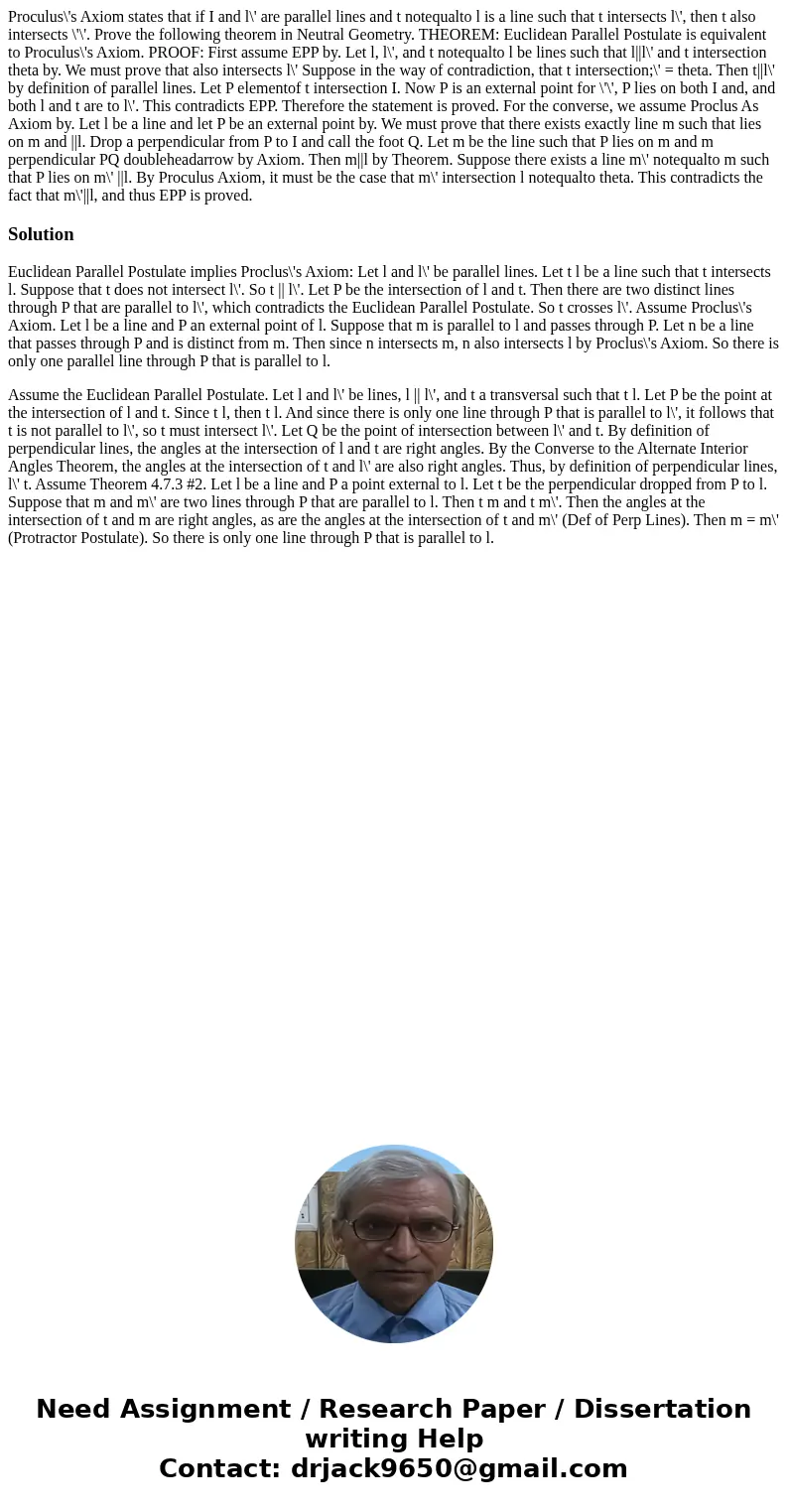Proculuss Axiom states that if I and l are parallel lines an
Solution
Euclidean Parallel Postulate implies Proclus\'s Axiom: Let l and l\' be parallel lines. Let t l be a line such that t intersects l. Suppose that t does not intersect l\'. So t || l\'. Let P be the intersection of l and t. Then there are two distinct lines through P that are parallel to l\', which contradicts the Euclidean Parallel Postulate. So t crosses l\'. Assume Proclus\'s Axiom. Let l be a line and P an external point of l. Suppose that m is parallel to l and passes through P. Let n be a line that passes through P and is distinct from m. Then since n intersects m, n also intersects l by Proclus\'s Axiom. So there is only one parallel line through P that is parallel to l.
Assume the Euclidean Parallel Postulate. Let l and l\' be lines, l || l\', and t a transversal such that t l. Let P be the point at the intersection of l and t. Since t l, then t l. And since there is only one line through P that is parallel to l\', it follows that t is not parallel to l\', so t must intersect l\'. Let Q be the point of intersection between l\' and t. By definition of perpendicular lines, the angles at the intersection of l and t are right angles. By the Converse to the Alternate Interior Angles Theorem, the angles at the intersection of t and l\' are also right angles. Thus, by definition of perpendicular lines, l\' t. Assume Theorem 4.7.3 #2. Let l be a line and P a point external to l. Let t be the perpendicular dropped from P to l. Suppose that m and m\' are two lines through P that are parallel to l. Then t m and t m\'. Then the angles at the intersection of t and m are right angles, as are the angles at the intersection of t and m\' (Def of Perp Lines). Then m = m\' (Protractor Postulate). So there is only one line through P that is parallel to l.

 Homework Sourse
Homework Sourse